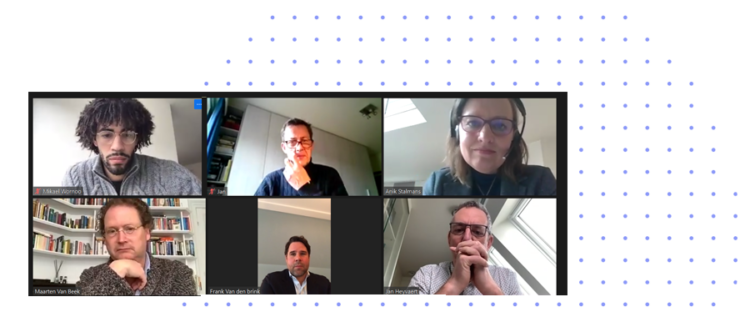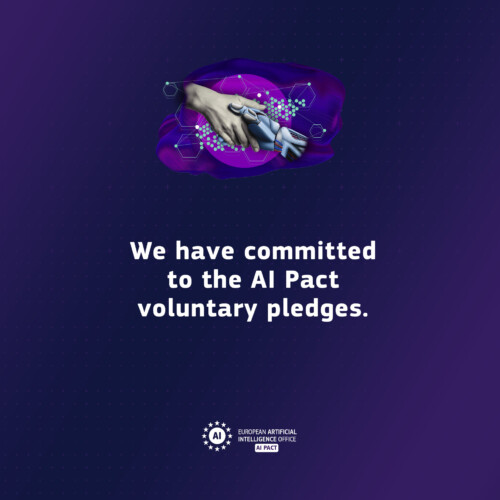5 Obstacles for Effective Strategic Workforce Planning
TechWolf's CHRO Round Table blog series (3/3)
On the 17th of March 2021, TechWolf organised a first Round Table with five CHROs; Anik Stalmans (Cegeka), Jan Van Acoleyen (Proximus), Jan Heyvaert (AG Insurance), Maarten van Beek (ING) & Frank van den Brink (former ABN AMRO). Read about their thoughts on Strategic Workforce Planning in this three-piece blog series.

The CHROs see five obstacles for the successful implementation of Strategic Workforce Planning.
1. Lack of a burning platform
It is a challenge to engage in debate when there is no visible problem or tangible threat today. As an employer, you set a course and make a risk analysis in the area of skill management. Anik Stalmans from Cegeka: "Put that analysis proactively and high on the agenda. Some people managers are lax in their coaching of strategically important employee skills. And it is sometimes difficult for them to know the broader context and to communicate it comprehensively. Tip from Jan Heyvaert of AG Insurance: "Enlist the help of Learning Advisors who are experts in the field."
2. Lack of clarity on the right strategic skills
"It is extremely important to have a clear idea of the strategic skills to invest in," Anik Stalmans argues. "That's where the process starts. Communicate in clear language so that people know where you want to go as an organisation and what you expect of them. That's how you create commitment".
"We need to look ahead and clarify which skills will be relevant in the future. And then invest in them in a focused way. This requires courage, not short-sightedness"
- Maarten Van Beek, ING
3. Insufficient trust
As HR, look inwards. "We need to look ahead and clarify which skills will be relevant in the future. And then invest in them in a focused way. This requires courage, not short-sightedness", reflects Maarten Van Beek. "We need to build more trust", Jan Van Acolyen adds. "An analysis based on data and facts helps, as does an objective debate about the future. That way we look beyond our prejudices." He points out that in order to do so, Strategic Workforce Planning must be dynamic (not a static exercise) and have a long-term focus (whereas business cycles often only count for one calendar year).
4. Getting bogged down in a discussion about FTEs (full-time equivalents)
How do you get teams to think strategically about their workforce planning? How do you differentiate from classic FTE planning? Nothing is easier than working with FTEs in a spreadsheet. That's how you get the conversation started with colleagues in the finance department. The danger is that you limit yourself to a quantitative debate instead of looking further in terms of quality. "The challenge is to evolve from FTE exercises to a total workforce cost and to include the competencies of internal and external employees in the scope. That process will facilitate a more qualitative debate at the management table," predicts Jan Van Acoleyen. "To make this feasible and workable, you need a platform that brings together data points so that you can arrive at meaningful discussions on content. That way, your organisation's readiness for consequences and investment is also on the table."
"The challenge is to evolve from FTE exercises to a total workforce cost and to include the competencies of internal and external employees in the scope."
- Jan Van Acoleyen, Proximus
5. And ... HR itself
We take a critical look in the HR mirror. "The capabilities of HR are sometimes a challenge to act in a business-driven way and have a qualitative discussion", notes Frank van den Brink. He calls for HR interventions to be based on sufficient business insight. Systems are sometimes inadequate, so HR still does a relatively large amount of manual work. He advises to learn from start-ups and scale-ups: that's where you'll find upcoming skills like growth hacking. With that knowledge, HR is a good challenger to business leaders. Just like with agility: predictive models fluctuate frequently. Jan Heyvaert concurs: "The word planning in Strategic Workforce Planning sometimes pinches. I compare it to a boxing match: keep on moving is the message. You know that blows will come, but you don't know where or when. Only by moving can you anticipate."
This was the last part of our blog series on the CHRO Round Table. If you missed the first two parts, you can still catch up: Giving Strategic Workforce Planning a Boost & The Impact of Strategic Workforce Planning.






